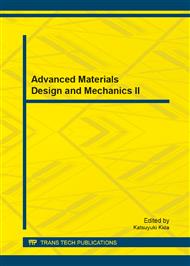p.543
p.547
p.555
p.559
p.563
p.567
p.571
p.575
p.579
Crystal Quality Improvement of CuInS2 Thin Film by Two Step Fabrication Method with Bismuth Addition
Abstract:
CuInS2 (CIS) is the promising candidate of an absorber layer of high efficiency thin film solar cells. The crystal quality of CIS is one of the important factors for high efficiency. A chemical doping approach using antimony and bismuth (Bi) is well known for improving crystal quality in Cu (In,Ga)Se2 thin films. In this study, the effect of Bi doping on evaporated CIS thin films was investigated. A CIS thin film without Bi doping annealed at 600°C showed small crystal grain size of ~1 μm, which was smaller than the CIS film thickness of 2 μm. The small addition of 50 nm-thick Bi promoted crystal growth and large grain size of greater than 1 μm, which was comparable to the CIS film thickness, was realized. The CIS films without and with Bi addition had surface precipitates identified as Cu-S and Cu-Bi-S compounds, respectively. The crystal growth promotion by Bi addition can be attributed to that the Cu-Bi-S compound which has lower melting point of 470~490°C than that of the Cu-S compound of 507°C acted as flux for crystal growth.
Info:
Periodical:
Pages:
563-566
Citation:
Online since:
August 2013
Authors:
Keywords:
Price:
Сopyright:
© 2013 Trans Tech Publications Ltd. All Rights Reserved
Share:
Citation:


